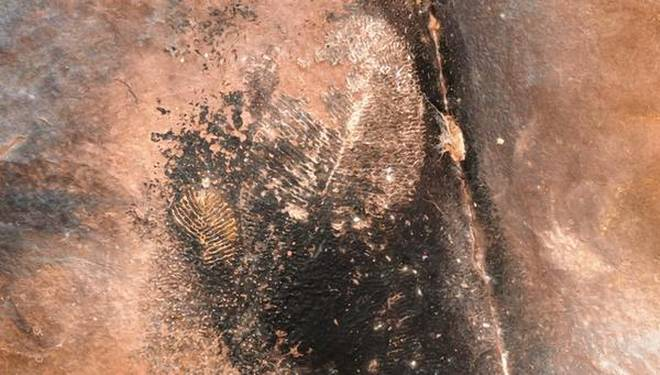Science & Technology
Dickinsonia: Earliest Known Living Animal
- 15 Feb 2021
- 5 min read
Why in News
Recently, researchers have discovered three fossils of the earliest known living animal, the 550-million-year-old ‘Dickinsonia’ on the roof of the Bhimbetka Rock Shelters.
- The fossils were found in the roof of the Auditorium Cave at Bhimbetka Rock Shelters.
Note:
- It was believed that sponges were the oldest living organism however there is currently no evidence that sponge-like animals conquered the oceans before 540 million years ago, when the first unambiguous fossils of sponges and most other groups of animals start to appear in the geological record.
- The earliest evidence for animals on Earth is now the 558 million-years-old Dickinsonia and other Ediacaran animals.
Key Points
- About Dickinsonia:

- Discovery:
- In September 2018, an international team of researchers claimed to have discovered the world’s oldest fossil of Dickinsonia, which first appeared around 571 million to 541 million years ago.
- Current fossil evidence dates back around 100 million years from Dickinsonia.
- Period and Area:
- It is an extinct genus of basal animal that lived during the late Ediacaran period in what is now Australia, Russia and Ukraine.
- Basal animals are animals which have radial symmetry in their body plans. They have very simple bodies and tend to be diploblastic (derived from only two embryonic cell layers).
- It is an extinct genus of basal animal that lived during the late Ediacaran period in what is now Australia, Russia and Ukraine.
- Appearance:
- Thought to represent the earliest flowering of complex multicellular life on our planet, these creatures arose in a world devoid of predators, and had no need for hard protective carapaces or skeletons.
- Their soft, squishy bodies resembled tubes, fronds or even thin, quilted pillows, they bore scant similarity to the anatomy of animals today.
- Thought to represent the earliest flowering of complex multicellular life on our planet, these creatures arose in a world devoid of predators, and had no need for hard protective carapaces or skeletons.
- Classification:
- Its affinities are presently unknown, its mode of growth is consistent with a stem-group bilaterian affinity, though some have suggested that it belongs to the fungi or even an “extinct kingdom”.
- The discovery of cholesterol molecules in fossils of Dickinsonia lends support to the idea that Dickinsonia was an animal.
- Discovery:
- Significance:
- It is further proof of the similar paleoenvironments and confirms assembly of Gondwanaland by the 550 Ma (mega annum).
- A paleoenvironment is simply an environment that has been preserved in the rock record at some time in the past.
- Mega-annum, usually abbreviated as Ma, is a unit of time equal to one million years.
- It is commonly used in scientific disciplines such as geology, paleontology, and celestial mechanics to signify very long time periods in the past.
- This finding could help scientists better understand the interaction of geology and biology that triggered the evolution of complex life on Earth.
- It is further proof of the similar paleoenvironments and confirms assembly of Gondwanaland by the 550 Ma (mega annum).
- Bhimbetka Caves:
- History and Period Span:
- The Bhimbetka rock shelters are an archaeological site in central India that spans the prehistoric Paleolithic and Mesolithic periods, as well as the historic period.
- It exhibits the earliest traces of human life in India and evidence of Stone Age starting at the site in Acheulian times.
- It is a UNESCO World Heritage Site that consists of seven hills and over 750 rock shelters distributed over 10 km.
- Discovery:
- The Bhimbetka rock shelters were found by V S Wakankar in1957.
- Location:
- It is located in Raisen District between Hoshangabad and Bhopal in Madhya Pradesh.
- It is about 40 kilometres south-east of Bhopal in the foothills of the Vindhya Mountains.
- It is located in Raisen District between Hoshangabad and Bhopal in Madhya Pradesh.
- Paintings:
- Some of the Bhimbetka rock shelters feature prehistoric cave paintings and the earliest are about 10,000 years old (c. 8,000 BCE), corresponding to the Indian Mesolithic.
- Most of these are done in red and white on the cave walls.
- A multitude of themes were covered in this form of rock art and it depicted scenes like singing, dancing, hunting and other common activities of the people staying there.
- The oldest of the cave paintings in Bhimbetka is believed to be about 12,000 years ago.
- History and Period Span:






